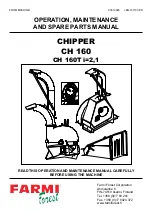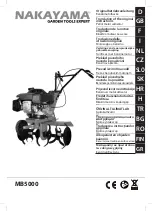
18-EB32D1-1E-EN
27
a. Turn on the electrical power to the unit.
b. Turn the thermostat to the highest setting in the
heating cycle.
5. As the thermostat calls for heat, the system cycles
as follows:
a. The combustion blower is energized.
b. The pressure switch is closed.
c. The gas valve opens and the ignitor lights the
burner.
d. Cycle the thermostat on and off a few times to
check out the control system and burner
operation characteristics.
N
No
otte
e:: For manifold pressures and orifice sizes
for gas with other BTU ratings, contact
the local gas utility. Manifold pressure
should be 3.5 inches w.c. (+0.1). Input
must n
no
ott exceed the value shown on the
rating plate.
e. With the burner operating, check the manifold
pressure with a manometer.
6. Do not exceed recommended pressures. If the
manifold pressure needs adjustment, refer to
Manifold Pressure Check and Adjust in the
Maintenance section. With the burners operating,
check the manifold pressure with a manometer.
7. If necessary, adjust the unit to obtain an air
temperature rise with that specified on the unit
nameplate. To adjust, refer to the Indoor Fan Motor
Speed Adjustment in the Maintenance section.
N
No
otte
e:: Blue smoke produced by the heat exchanger
during the initial burner firing is caused by a
thin film of oil on the surface of the heat
exchanger. This oil will burn off quickly.
8. Set the thermostat at the desired temperature
setting and the unit will function automatically.
F
Fiin
na
all IIn
nsstta
alllla
attiio
on
n C
Ch
he
ecckklliisstt
տ
Does the unit run and operate as described in the
section on "Sequence of Operation" in response to
the room thermostat?
տ
Are the condenser fan and indoor blower operating
correctly with proper rotation and without undue
noise?
տ
Is the compressor operating correctly and has the
system been checked with a charging chart?
տ
Has the voltage and running current been checked
to deter mine if it is within limits?
տ
Has the thermostat been checked for calibration
and the air discharge grilles adjusted to balance the
system?
տ
Has the ductwork been checked for air leaks and
condensation?
տ
Has the furnace manifold pressure been checked
and adjusted if necessary?
տ
Has the heating air temperature rise been checked?
տ
Has the unit been checked for tubing and sheet
metal rattles? Are there any other unusual noises to
be checked?
տ
Are all covers and panels in place and properly
fastened?
տ
Has the owner been instructed on the proper
operation and maintenance of the unit? Be sure to
leave this manual with the owner.
S
Stte
ep
p 5
5 —
— U
Un
niitt S
Stta
arrttu
up
p






































